Dec 15, 2025
Dec 15, 2025
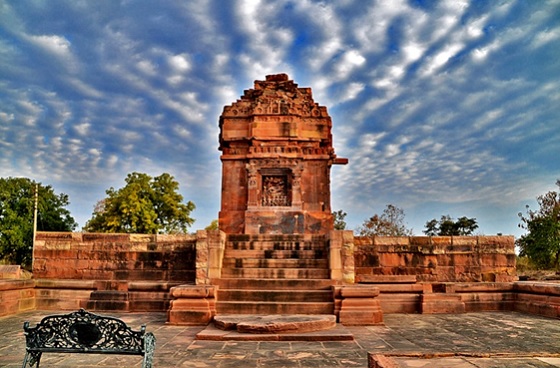
Figure 1: Deogarh Dashavatara Temple - as on 1st March 2019 (Photo © author)
Deogarh Dashavatara Temple (henceforth DATmpl), in Lalitpur (District), Uttar Pradesh (State), dated to last decade of 5th century A.D, commissioned by Budhagupta (c. 476-496A.D),[1] is valuable to Indian Civilization and Bharatiya Tradition in many ways.
In terms of Archeological finds (to date) and History, it is the ancient-most surviving temple that first featured prominent Shikhara, thus making DATmpl the pioneer and landmark of Temple Architecture. In terms of Art and Iconography, it is unique in its beauty and finesse.
The temple faces West (approximate), and the walls are adorned with extraordinary reliefs. Though much of the works have either decayed with time, or been relocated in museums, what remains is feast for the eye, and food for the brain. The Sanctum Sanctorum is empty, but the Bas-reliefs on the door walls and plinth are almost intact.
Three wide panels on the other three walls are the main assets of DATmpl: Gajendramoksha panel on the North, Naranarayana panel on the East, and Vishnu Anantashayin panel on the South. On the Adhisthana (base platform) wall in North-West, some beautiful Bas-reliefs still remain, featuring a couple with two children, variously interpreted as Nanda-Yashoda with Balarama and Krishna, or Rama and Sita with Lava and Kusha, or Shiva and Parvati with Karttika and Ganesha.
While discussion on the Temple and Sculptures can go on without end because little can be spoken on what is felt, I shall do only what can be spoken, here, in three parts. In this first part, I shall discuss on the Pandavas-Draupadi panel (henceforth PaDrP) which is sub-panel of the Vishnu Anantashayin panel and constitutes its Lower Part.
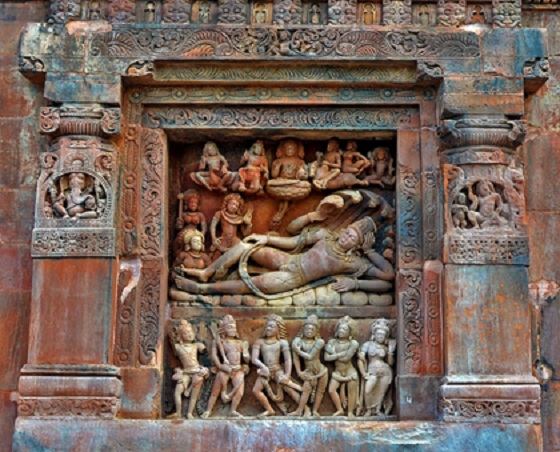
Figure 2: Vishnu Anantashayin panel (South wall), Dashavatara Temple (Photo © author)
The PaDrP is remarkable on many points. First, this is the first prominent depiction of Pandavas and Draupadi in Temple Bas-relief; secondly, here Yudhishthira is not only the central figure but also wields a Sword overwhelming the other brothers. Centrality of Yudhishthira is understandable; however, his depiction as the most prominent and even aggressive figure gives valuable clue on how the Guptas viewed Mbh and Yudhishthira. Thirdly, among weapons depicted in PaDrP, the Sword is here the central weapon. This certainly merits exploration.
In the depiction, Yudhishthira’s right hand holds the hilt, and left hand, the mid-portion of the Sword. Though the Sword is broken between the two palms, the portion in left hand does not appear to be a scabbard, that is, he is not unsheathing the Sword but holding the whole. The diameter of the Sword in right hand palm and left palm is same. The hilt is also not decorated (like Fig-1-2’s weapons). If it had been a Kshatriya-Sword (metal), he could not have held the blade in left palm without a scabbard. Thus it is likely a Wooden Sword, Sphya, an essential in Ashvamedha Yajna.
History of Human Civilization is also History of Art. This is particularly so in case of India. In this article, with particular focus on Sword-wielding Yudhishthira, I would discuss how Sword evolved as simultaneous soteriological (Brahmanik or Spiritual), Kshatriya and Community (vish, of Vaishya and Shudra) Symbol in Literature and Iconography in Gupta Age, understanding it as a symbolic representation of Gupta Kingship-Ideology, and Gupta view of the tradition and heritage of Rajadharma down the ages from Ancient Bharatavarsha. I would argue and show that Yudhishthira’s Sword, as symbol of Dharma and Danda, depicts Rajasuya and Ashvamedha-Ritual, and actually signifies Good Governance, the Kartavya of Public Servant, and Social Welfare State; the legatee of which is borne by Modern India.
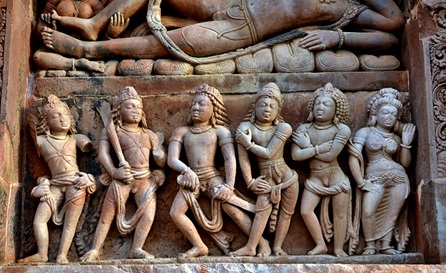
Figure 3: Pandavas and Draupadi panel (close-up) (Photo © author)
1. Gupta Kingship-Ideology and Yudhishthira-Fascination
The Present Mbh.-Text received its final form during Gupta Age. The Khoh Copper-Plate Inscription of the Maharaja-Sarvanath (533-34 AD) remembers Mbh. as Shatasahasri-Samhita. The Mbh influence on the Guptas is evident from their title ‘Gupta’ which is one name and epithet of Krishna (3.46.38a), Vishnu (1.3.152a; 12.122.36c) and Narayana (12.47.45c; 12.322.5a). Gupta names like Chandra, Skanda, Kumara, Narasimha, Budha (Gupta) show Vedic and Puranik influence; however, the rare name Ghatotkacha (Gupta), a marginalized character, occurring twice in the dynasty, [2] confirms profound influence of Mbh. and likely of Bhasa (Duta-Ghatotkacham).
Yudhishthira is an aspiring Goptaa (e.g. 3.31.7a; 12.73.7; 121.53a) like all great preceding Kings - Duhshanta, Yayati, Shantanu, Rama, and Ambarisha - all of whom have been hailed as Goptaa. In Kalidasa’s Kingship-Ideology, King Dilipa is Goptaa (Raghuvamsha, 2.24). Similarly, Skandagupta is hailed as ‘Protector’ - Goptaa in Junagadh Rock Inscription. Evidently, for the Guptas, Yudhishthira is an Ideological Model.
The Kamandakiya-Nitisara (ca. close of 4th cent. CE; written by Chandragupta-II’s advisor) remembers Yudhishthira as symbol of Hope of regaining kingdom at the end through strategic sacrifice (XI.29C), and as symbol of Kshatriya prowess and values that a King should emulate: “A king should drive his enemy to destruction by open attack, even like king Yudhisthira himself (XVII.41).” Yudhishthira capable of “open attack” is surely reflected in PaDrP Yudhishthira, showing the Sculptor-Poet’s Nitisara influence.
The Guptas Yudhishthira-fascination is also evident from Inscriptions. In Supia Pillar Inscription (year 141), Skandagupta is eulogized as resembling Yudhishthira in truthfulness, conduct and humility. Many Inscriptions on Land-Grant like the Dhanaidaha Copper-Plate Inscription (432-33 AD) of Kumaragupta-I, Mankuwar Stone Image Inscription of Kumaragupta (year 129), Bihar Stone Pillar Inscription of Budhagupta, and of Contemporary Gupta feudatories and/or late Gupta Kings remember Vyasa advising Yudhishthira to carefully preserve land already given to the twice-born, regarding Yudhishthira as the best of land-owners.
2. Yudhishthira and Dharma-Indra-King in Kingship-Ideology
The Cultural Memory of Yudhishthira points to the fact that he is indispensable in any discussion on Kingship-Ideology. He is remembered in Texts outside Mbh and known Puranas like in Panini’s Ashtadhyayi [3] (8,3.95); Kautilya’s Arthashastra (8.3.43); Patanjali’s Mahabhashya (2nd century BCE); obliquely in Ashvaghosa’s Buddhacarita (1st century CE), Lalitavistara-Sutra (3rd century CE) (3.16-17) and in later Bharavi’s Kiratarjuniya (c. 6th century AD or earlier), Banabhatta’s Harshacarita (c. 606-647 CE), and in Kalhana’s Rajataramgini (1148-1149 CE [4]). Kamandaka reference is already noted. Another influence on PaDrP weapon-bearing Yudhishthira seems to be Yuga Purana (c. 25 BCE [5]) that imagines Yudhishthira as combined aspect of Samkarshana-Balarama bearing the plough as a weapon (Verse-31).
That in Mbh, Yudhishthira is Dharma-Indra on Earth [6], may be read as allegory of the Vedic Kingship-Ideology, because Indra is associated with Dharma (8.98.1c) and duty (dharmakrte) (RV- 8.98.5a). The Dharma-King fascinated all ancient rulers who have left mark in Indian History, like Ashoka, Pushyamitra-Shunga (c.185 - c.149 BCE), Satakarni (70-60 BCE/ 187-177 BCE), Shaka Rudradaman [Junagadh Rock Inscription (152-53 CE)] and Kharavela [Hathigumpha Inscription (1st century CE)].
Gupta Kingship-Ideology inherits this in hailing Samudragupta as “the enclosing structure of Dharma (Dha[rmma]-prachira-bandhah),” (Allahabad Stone Pillar Inscription or Allahabad-Prashasti of Harishena) and Chandragupta-II as one with rare spiritual merit and protector with Dharma (samrakta dharma) (Udayagiri Cave Inscription).
Other than Dharma, another Key discourse in Ramayana and Mbh is Danda. For example, Krishna has Danda as the mission of his life (Gita 4.8c), and Danda is the instrument of dharmasamsthapana. Vyasa advises Yudhishthira to have udyatadandanam (raised Danda) for people’s protection (12.32.19c). Yudhishthira’s Active Sword is literally the udyatadandanam, also cherished in Arthashastra and Nitisara.
Naradasmrti, Kautilya’s Arthashastra and Kamandakiya-Nitisara speak of Danda-Niti as superior Vidya. The Dandadhara king is cherished to thwart Social-Level Matsyanyaya; and the King should be Digvijayi and performer of Rajasuya and Ashvamedha to thwart Rashtriya-Matsyanyaya [7] to be worthy of Indra (2.11.66-67). Kautilya regards such a conqueror with Dharma-motive as Dharma Vijayi. Nitisara cherishes Mahendra-like just and impartial king, and the Vijigishu (Conqueror) is in Indra’s archetype, reminding of the allegory in Indra-Pandavas’ mythical birth, all Pandavas being Indra-incarnate.
Samudragupta followed the Dharma Vijaya policy like Yudhishthira. He brought “the king, born in Kota family” under control by Danda. In Mathura Pilaster Inscription of Chandragupta II (380 AD), Danda is hailed as ever victorious Bhagavana, Rudra and Nayaka. Dharma-Danda centric Gupta Ideology of Empire building is deeply connected with Ashvamedha, and is in traditional line with Bharata Dauhshanti, the progenitor of Bharatas and the father of Indian and Hindu Civilization, also immortalized in Kalidasa’s Abhijnanashakuntalam. The iconographic precedence of Shakuntala narrative is found in carvings at Orissa-Udayagiri (c. 1st century A.D.) and a terracotta panel from Bhita (Ca. 2nd century B.C.). [8]
3. Sword in Gupta Age Literature, Inscriptions, and Numismatic Art
Gupta Age Literature, Inscriptions and Numismatic Art show how Sword evolved as Symbol of Gupta Kingship-Ideology. For a Kshatriya, Astra-wound-marks are matters to vaunt; they are his physical Alamkara. For example, Arjuna is jyaghatakathinatvacau (4.2.18c). In similar Mahakavyik spirit, Harishena eulogizes Samudragupta’s parakrama and ‘charming body’ being covered over with the marks of Swords and other weapons. Similarly, Chandragupta-I is one “On whose arm fame was inscribed by the sword (Verse 1).: (Meharauli Iron Pillar Inscription of Chandra).
In Gangdhar Stone Inscription (424-25 AD) of Vishvavarman (contemporary feudatory of Kumaragupta), King Naravarman’s valour and prowess are praised, and the battlefield is imagined as full of the rays of his Sword (Khadga). His “two handsome arms that are muscular and long and round and pendulous” are eulogized as marked with Sword wound.
Kamandakiya-Nitisara transforms Sword into a Symbol of Royalty, Kshatriya-prowess and mark of Vijigisu (XIII.14).” In Kalidasa’s Kumarasambhavam, Sword is one decisive Astra of Skanda against Taraka. Again in Vishakhadatta’s Mudrarakshasa, both Canakya (Act 1, 12), and the minister Rakshasa wields Sword to defend the King and native place, Kusumapura.
The Sword-Symbol is evident also in Numismatic Art. Kushana Coins depicting Solar deity Mithra with Sword are a definite precedence to Guptas. Samudragupta introduced ‘Sword Type’ Coins depicting the King holding Rajadanda with a dagger or short sword in his belt; Chandragupta II’s coins show the King wearing a sword at his hip.
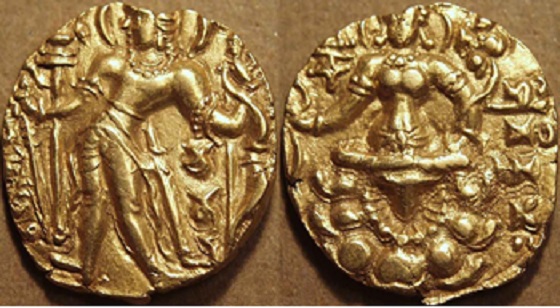
Figure 4: Chandragupta II Dinar Coin (c. 375-414). Image courtesy coinindia.com
The evolution of the Sword-Symbol in Gupta Numismatic Art definitely parallels Yudhishthira’s Sword.
4. Yudhishthira’s Sword significance: Dharma, Danda and Yajna
The Sword befits Yudhishthira, the Dharma-Indra and Vishnu’s Kingship legatee, because it is ṚgVedic Indra’s weapon, and one of Vishnu’s primary Astras, Nandaka. In Mbh, Sword is Astra of the Devi, the combined force of Durga, Kali, Shri and Vac-Sarasvati (4.5.30d@4C_18), who blesses Yudhishthira (and Arjuna) with victory over Kauravas. She is the Devi of combined aspects, who features on the reverse of many Gupta Gold Coins.
In a Mythical Birth Narrative of Sword in Mbh, Yudhishthira and Pandavas inherit Vishnu’s Sword. This Sword, first born as a Being or Ayudha-Purusha (12.160), passes through Brahma, Rudra, Vishnu, Indra, Kings to finally reach the Pandavas. The Sculptor surely remembers this episode to depict Yudhishthira’s Sword, signifying Vishnu’s legatee and paralleling Candragupta’s Cakravikrama Coin. Thus the PaDrP directly connects with Vishnu-Anantashayin that depicts Krishna-Vishnu, giving an Organic Unity to the Vishnu Anantashayin panel.
This first-born Mbh-Sword symbolizes Dharma, Danda Vijaya and Shri because it contains Dharma within its womb for protection of creatures and meting out Danda (12.160.67-68). Further, Sword is foremost of weapons (agryah praharananam, 12.160.83a) born of SHri’s womb (thus giving Shri-connection), and has "8" names, one of which is Vijaya, (the common name of Arjuna and Danda) and another is dharmapala. Significantly, the SHloka contains the word “dharmasetum”, the same word used in Mâdhavagupta’s panegyric in the Aphsad Stone Inscription of Adityasena (c. 655-680 CE).
Sword has Spiritual (Adhyatmika) and Dharma significance. The tolerance to Sword-wound denotes Atmajnana (e.g. Maha Upanishad, IV-25). Sword represents Jnana, Intellect and Intelligence (ṚV: 6.47.10; Gita 11.39) and renunciation (tyagasina) (12.308.52). In Buddhist iconography, Bodhisattvas Manjushri and Acala, bear Sword. Yudhishthira’s Sword, therefore, symbolizes the combined aspect of Brahmana and Kshatriya-Guna, which is cherished in Kingship-Ideology - brahmakshatram hi sarvesham dharmanam mulamucyate (Bhishma: 12.74.5c). In Ramayana, both Rama and Lakshmana are accomplished in Sword (e,g, 1.1.42; 1.22.8). Rama received Varuna’s Sword via Janaka (2.31.27-29), another symbol of Kingship-Ideology.
Yudhishthira’s Sword is thus the Symbol of Rajadharma; the Dandadhara (12.73.7a), staying with Danda uplifted in his hand (nityamudyatadandasya, 12.138.8).
Now, the particular moment in PaDrP iconography, in my opinion, relates more directly to Ashvamedha Yajna as Symbol of Gupta Ideological aspirations. Kumaragupta-I, depicted with Sword in Numismatic Art performed Ashvamedha-Yajna like his great grandfather Samudragupta. Moreover, as Stella Kramrisch points out, the four-cornered citadel of the gods of the Ashvamedha-Yajna is a precursor of the square house of god, the Hindu temple, [9] that is, Temple Architecture itself evolved from Ashvamedha-Ritual.
If Yudhishthira’s Sword is a Sphya, it is again connected with Indra because when Indra hurled his Vajra to Vrtra, it became fourfold, one part being wooden sword (sphya) of its three parts (sphyastrtiyam) (Shatapatha-Brahmana-1.2.4.1), which Brahmana uses in Yajna (brahmanayajnecaranti, 2). Sphya thus represents Brahmana-Kshatriya Guna synthesis; however, it relates to the vish (Common People) too in Rajasuya-Rite.
In the Rajasuya-rite, before the Dice Game-rite begins, the Adharvayu priest or the house chaplain [10] hands over the Sphya to the sacrificer-king, uttering the Mantra-“Indra’s thunderbolt thou art, therewith serve me”. The King receives the Sphya and then hands it over to his brother; who in turn hands it over to “the suta or the Governor; the suta or Governor to the gramaņi (village head man); the gramaņi to a tribes man (sajata). The tribesman along with the Pratiprasthatr priest (the first assistant of the Adharvayu) prepares the gaming ground for the Dice Game by means of the wooden sword; the king is (thus) made stronger than his enemies (Shatapatha-Brahmana. 5.4.4.15-20).”
Symbolically, the King’s passing over Sword, symbolizing Dharma and Danda, is dissemination of Power, that is, sharing power, to becoming Dharma-Indra to establish Dharmarajya which is Social Welfare State in essence. Shri stays permanently with the power-sharing King. [11] This is a great didactic message of Mbh on Power.
Evidently, Ashvamedha was not just a royal ritual, but as Stutley observes, also a fertility rite, “associated with the Spring festival in which the whole community took part, and which was of popular rather than of priestly origin.” [12] The Ashvamedha represents the Community, rejecting hegemony of any ‘class’ or ‘caste.’ Harper notes, in Ashvamedha rituals, royal domination was subordinated to the concept of the welfare of the people and dharma”. [13]
In the light of this ritual, the Pandava-Draupadi panel may now be interpreted as Yudhishthira about to hand over the Sphya to his brother Bhima, before Bhima and Arjuna undertakes the Dharma Vijaya beginning with elimination of Jarasandha, an Avatarik mission of Krishna-Vishnu. As Gonda points out, the Ashvamedha is the king of sacrifices, and the King-sacrificer is identical with Ashvamedha, so that “he is disposed to be ‘strong in arms’… and strong in thighs” (P-135). [14] Obviously, Yudhishthira’s strong arms with Sword and extended leg (strong thighs) represent this. In contrast, Duryodhana ends up with broken thighs.
Even the placement of PaDrP on the southern wall has Mbh connection. In Pancharatra doctrine, the South represents Jaya (victory), the very title and purport of Mbh. Vishnu’s placement in the south produces Jaya (victory). [15] The secret names that Yudhishthira gives to himself and his brothers during Incognito Exile are Jaya, Jayanta, Vijaya, Jayatsena, and Jayadvala (4.5.30a), that is, Yudhishthira himself is Jaya - his “Gupta” name (Arjuna’s name is Jaya too; 3.155.2c). By his unique wit, the Sculptor-Poet transforms Yudhishthira into ‘Gupta’ through Jaya.
5. Conclusion
Yudhishthira with Sword perhaps specifically represents Budhagupta’s Ashvamedha aspirations. This paper within its set limit has discussed on Yudhishthira only; however, further understanding is possible with detailed exploration of PaDrP, ViAnP and the DATmpl, which would be done in a separate venture. How Sword remains as Symbol of Post-Gupta Age Kingship-Ideology has also not been discussed here.
I would conclude the paper with the information that in Modern India, the Sword-Symbol has been adopted in Indian Army Flag featuring crossed Swords and in Balidan insignia. The Symbol of crossed Sword-Baton has been adopted in shoulder insignia of Field Marshal, General, Lt. General, and Major General. Indian Army’s motto is Seva Paramo Dharma, War-Cry is Bharata Mata Ki Jaya; the Seva, Dharma and Jaya connecting with Mbh and Dharma-Indra’s Sword.
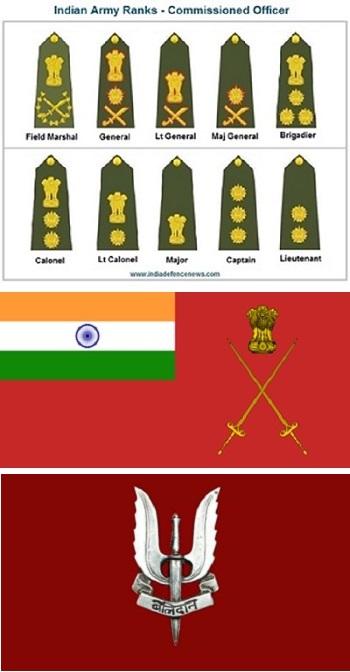
Figure 5: Sword as Symbols in Indian Army
(I visited and documented the Deogarh-Dashavatara Temple on 1st-2nd March 2019; also Nahar-Ghati, Raj-Ghati, Siddh-Ki-Gupha and Varaha temple. I am grateful to my friend Shri Partha Ghosh, my school pal, for accompanying me. I am thankful to Dr. Pradip Bhattacharya for providing his valuable opinion and comment on the first draft of this paper)
References:
Primary Source Texts
Secondary References
End Notes
21-Jul-2019
More by : Indrajit Bandyopadhyay